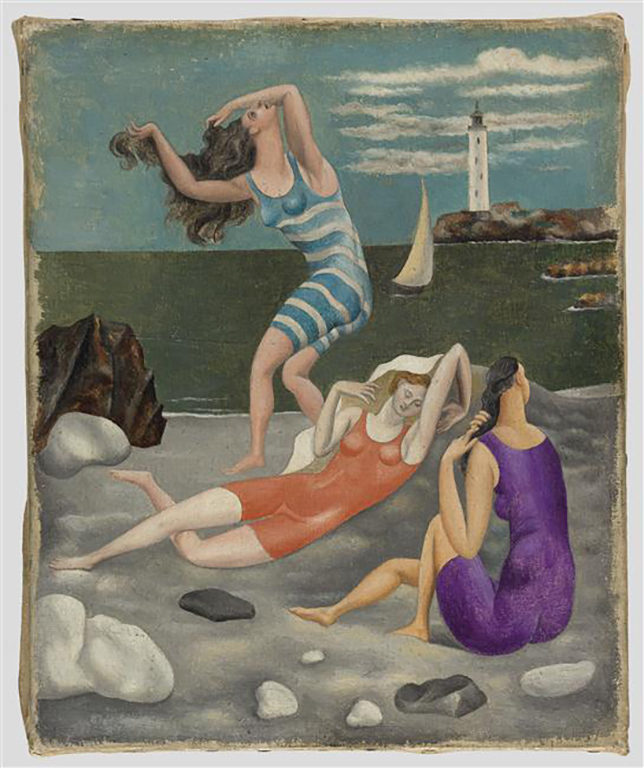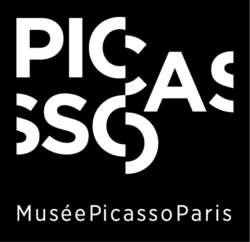Exhibition Will Make Exclusive U.S. Appearance in Nashville
Advance timed entry tickets now available

Pablo Picasso (1881–1973). The Bathers, Biarritz, summer 1918. Oil on canvas, 10 5/8 x 8 5/8 in. Musée national Picasso-Paris, Pablo Picasso Acceptance in Lieu, 1979. MP61. © 2021 Estate of Pablo Picasso / Artists Rights Society (ARS), New York. Photo © RMN-Grand Palais (Musée national Picasso-Paris) / Sylvie Chan-Liat 
Pablo Picasso (1881–1973). Jacqueline with Crossed Hands, Vallauris, June 3, 1954. Oil on canvas, 45 5/8 x 34 7/8 in. Musée national Picasso-Paris, Jacqueline Picasso Acceptance in Lieu, 1990. MP1990-26. © 2021 Estate of Pablo Picasso / Artists Rights Society (ARS), New York. Photo © RMN-Grand Palais (Musée national Picasso-Paris) / Adrien Didierjean
NASHVILLE, Tenn. (January 21, 2021)—The Frist Art Museum will open Picasso. Figures, an exhibition from the incomparable collection of the Musée national Picasso-Paris, on February 5, 2021. Non-refundable advance timed entry tickets are required and now available.
The exhibition offers an in-depth look at Pablo Picasso’s career-long fascination with the human figure as a means of expressing a range of subjects and emotions. Featuring 76 paintings, works on paper, and sculptures, Picasso. Figures will make its sole U.S. appearance in Nashville at the Frist from February 5 through May 2, 2021 during the museum’s 20th anniversary.
Highlights of the exhibition include masterpieces from Picasso’s various styles and periods, as well as more intimate works that provide fresh insights into his innovative practice. “Viewers will see how, as Picasso continuously deconstructed and then remade the body, he was also recasting the history of figuration as a combination of his own psychological view of humanity and observations about the disruptive nature of life in the 20th century,” says Frist Art Museum chief curator Mark Scala.
The works in Picasso. Figures range from geometric abstractions of the human body to emotionally charged depictions of family, friends, and lovers, offering a panoramic summary of his wide-ranging creativity while providing glimpses of his tumultuous relationships with his wives, mistresses, muses, and models.
Born in Málaga, Spain, in 1881, Picasso was classically trained by his father, a professor of art at a local university who later taught at the School of Fine Arts in Barcelona, where Picasso started taking classes at age thirteen. After studying in Barcelona and then Madrid, Picasso took periodic trips to Paris, the world capital of art. He moved there in 1904 and soon earned recognition for his talent and his desire to expand the limits of artistic expression. In 1908, with Georges Braque, Picasso conceived of cubism, a style of overlapping, faceted geometric forms that suggest the relativity of time and space while exploding conventions of representation in art. Following this radical departure, Picasso would sustain a lifelong reputation as one of the great groundbreakers in 20th-century art.
“Stylistic innovation and individual genius are valued attributes in art, and this exhibition conveys Picasso’s unquestioned stature at the forefront of modernism,” says Scala. “At the same time, it provides an opportunity to consider his personal history within a broader social framework.”
The exhibition begins with “Female figures,” portraits of women with whom Picasso had romantic relationships. The selection shows his wide range of stylistic approaches and at the same time offers insight into his complex attitudes toward women throughout his life. For example, a highlight of this section, the stunningly lyrical Reading Woman (La Lecture, 1932), depicts Marie-Thérèse Walter, a young woman with whom the married artist, then in his mid-40s, had an affair.
The next section, “Cubist figures,” shows Picasso in the first decade of the 20th century as he synthesizes influences, from the geometric faceting of Paul Cézanne’s paintings to the abstract stylization of African and Iberian masks and sculptures. “With its references to the unfixed conditions of modern life, the ambiguous description of form and space, and the liberation from the visible world, cubism would become one of the 20th century’s most influential styles,” writes Scala.
Unsatisfied with following a single artistic path, Picasso continued to innovate and integrate. The section of the exhibition called “Magic figures” includes works from the mid-1920s through the 1930s and shows the influence of surrealism. “While never a part of the surrealist group, Picasso shared with its members an interest in metamorphosis, particularly in the context of human sexuality,” writes Scala.
In the next section, “Sculptural figures,” human primality is manifested in constructions of rounded organic forms, often suggesting anatomies made of earth and rocks. In “Disfigured figures,” depictions of the figure are increasingly distorted, often conveying extreme expressions of lust, anger, or despair. Among the most powerful is The Supplicant (La Suppliante, 1937), which shows a terrified woman, hands upraised as if imploring the sky for mercy. The painting evokes the female figure on the right side of Picasso’s great anti-war masterpiece, Guernica, painted the same year. Like Guernica, The Supplicant elicits horror at human cruelty, and empathy for the victims of violence.
The exhibition culminates in late works, characterized by vivid colors, exuberant brushstrokes, and playful twists on the old masters, showing that Picasso’s endless desire to reinvent painting continued until the end of his life. “With almost brutal vitality, these late paintings illustrate how Picasso constantly questioned academic ideals of beauty and harmony,” writes Scala. “But they also circle back to his early classical training, showing the inspiration he took from art history, as evidenced in his tribute to Édouard Manet, Luncheon on the Grass, after Manet (Le Déjeuner sur l’herbe d’après Manet,1960). Here we see an artist whose fame rests on his rejection of tradition, but who never stopped being in dialogue with the past.”
“We are delighted to work with the Musée national Picasso-Paris—the home of the world’s largest and most comprehensive public collection of works by the iconic artist—to bring Picasso. Figures to Nashville,” says Frist Art Museum director and CEO Susan H. Edwards. “Through the extraordinary generosity and support of our community for almost 20 years now, we have been able to deliver on our mission to present world-class exhibitions in Nashville. For many years, we have been looking for a Picasso show of this caliber, and we are thrilled that during our 20th anniversary we will be able to share this astonishing collection with our guests.”
Programs
Thursday, February 4
Curator’s Perspective: Picasso. Figures presented by François Dareau, associate curator, Musée national Picasso-Paris
5:30 p.m.
Free
Register here
Picasso. Figures offers an in-depth look at Pablo Picasso’s career-long fascination with the human figure as a means of expressing a range of subjects and emotions. Join François Dareau, co-curator of the exhibition with Emilia Philippot, for this online lecture about Picasso’s innovative approaches to deconstructing, abstracting, and transforming the body in his art. An art historian, Dareau has been a researcher at the Musée national Picasso-Paris since 2017. He worked on their presentation of Picasso 1932 (2017) and co-curated Diego Giacomettiat the Picasso Museum (2018).
Exhibition Catalogue
The exhibition is accompanied by an illustrated 176-page catalogue, edited by Emilia Philippot and François Dareau, from the Musée national Picasso-Paris. The book, published by MondoMostre, includes seventy-five color plates, full-page details of artworks, and numerous comparative illustrations. In addition to an essay considering Picasso’s art through the prism of contemporary approaches, such as his representation of both male and female figures, the catalogue also contains extensive commentary on artworks and a comprehensive chronology of the artist’s life. It will be appreciated by novices and Picasso specialists alike.
Exhibition Credit

Picasso. Figures is organized in collaboration with the Musée national Picasso-Paris. It was conceived and organized by Emilia Philippot, curator, and François Dareau, associate curator, Musée national Picasso-Paris.
Supporter Acknowledgment
Platinum sponsor: HCA Healthcare/TriStar Health
Gold sponsors: Lynn, Ken, and Lauren Melkus and Nashville Convention & Visitors Corp
Bronze sponsor: The Hays Foundation
Supported in part by our Frist Patrons
Hospitality sponsor: Union Station Hotel
Education and community engagement supporter: The Windgate Foundation and First Horizon
The Frist Art Museum is supported in part by the Metro Nashville Arts Commission, the Tennessee Arts Commission, and the National Endowment for the Arts.
Connect with us @FristArtMuseum #TheFrist #FristPicasso
Exhibition Itinerary
Frist Art Museum: February 5–May 2, 2021
Musée national des beaux-arts du Québec, Quebec City, Canada: June–September, 2021
FOR ADDITIONAL INFORMATION
Buddy Kite: 615.744.3351, bkite@FristArtMuseum.org
Ellen Jones Pryor: 615.243.1311, epryor@FristArtMuseum.org
